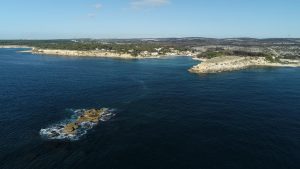1. The High Ambition Coalition (HAC) for Nature & People is campaigning to conserve 30% of the world’s marine and terrestrial areas by 2030 (‘30×30’). The HAC supports this being achieved with the inclusion, participation and partnership of Indigenous peoples and local communities (IPLCs) whose traditional lifestyles embody the conservation and sustainable use of biological diversity, as well as through promoting Indigenous leadership in conservation.
2. Many countries, including HAC members, have had positive experiences working together with IPLCs on Protected Area Systems, achieving important conservation biodiversity results while ensuring IPLC rights are safeguarded*, enabling a ‘win-win’ situation for both nature and IPLCs (case studies) taking into account international instruments and laws related to human rights in accordance with national legislation.
3. The HAC is aware of concerns expressed by some IPLCs and organisations such as:
i. Lack of legal recognition of IPLCs rights and vital roles in conservation
ii. the lack of safeguards for IPLCs in target 2 language and indicators.
iii. that the implementation of the 30% target could negatively affect the rights of IPLCs on their territories (e.g. through dispossession).
iv. the potential lack of inclusion of IPLCs in area-based management and governance systems.
v. the lack of prior assessment of social impacts and conservation effectiveness of recently created protected areas and other effective area-based conservation measures (OECMs).
vi. the OECM category not capturing the diversity of IPLC territories.
vii. concerns about the recognition of customary tenure and ownership of IPLC lands and water
4. The HAC for Nature & People has created a Task Force on IPLCs to listen to, and work on, IPLC concerns that conserving 30% of the planet’s land and ocean could have adverse effects for them. This is being achieved through dialogue with the International Indigenous Forum on Biodiversity (IIFB) and at a national level through dialogue with Indigenous Peoples and Local Communities representatives to develop a narrative and discuss potential options for global biodiversity framework target 2 wording and indicators to help address these concerns. The goal is to ensure IPLCs are fully engaged and included in discussions on target 2, to ensure 30×30 is beneficial for both nature and IPLCs.
5. As per the IPBES Global Assessment on Biodiversity and Ecosystems, recognizing the knowledge, innovations, practices, institutions and values of IPLCs, and ensuring their inclusion and participation in environmental governance, often enhances their quality of life and the conservation, restoration and sustainable use / abundance of nature, which is relevant to broader society (IPBES, 2019).
6. Consistent with rights-based collaborative approaches that support and promote community-led conservation and customary sustainable use and that celebrate the mutual relations between nature and culture, traditional or contemporary stewardship and governance of lands and seas by IPLCs can often be the most effective at achieving biodiversity conservation outcomes, (Local Biodiversity Outlooks 2 (LBO2), 2020).
7. Conservation and restoration efforts have often historically infringed upon the rights of Indigenous peoples (UN Permanent Forum on Indigenous Issues) (Indigenous Circle of Experts – ICE, 2018; A New Shared Arctic Leadership Model, 2017; Agrawal and Redford, 2009). There has been increased awareness recently of this ongoing problem in various regions of the world where IPLCs continue to be forcibly displaced and dispossessed to make way for protected areas and similar conservation areas, with these concerns particularly relevant for Indigenous women (Phillips, 2019; Nepstad et al., 2006; Schuster et al., 2019; Watson, 2018; Thekaekara, 2019). Such efforts are poor examples of equitable and effective management and would not be considered suitable under the HAC’s proposal to successfully conserve 30% of the planet’s land and ocean. For this reason, equitable and effective management is considered central to the HAC’s proposal to successfully conserve 30% of the planet’s land and 30% of the planet’s ocean.
8. Given the crucial role of IPLCs in effective and meaningful conservation that was highlighted in the IPBES report, IPLCs, including women and youth must be central partners in the development and implementation of a new spatial target. Many positive examples exist of IPLCs effectively managing their areas (e.g. LBO2, www.conservation-reconciliation.ca, Territories of Life 2021 report) for biodiversity, helping to create ‘win-win’ situations where both nature and IPLCs can benefit from IPLC-leadership in the management and co-management of lands and seas, further helping to build economies of scale for IPLCs.
9. The adoption of the 30×30 target in the global biodiversity framework is an opportunity to implement the commitments made under the UN Declaration on the Rights of Indigenous Peoples and to ensure an innovative approach to conservation that respects and lifts up Indigenous rights and responsibilities, respects the rights of humans and nature, and engages Indigenous Peoples as full partners and leaders. Moreover, by ensuring that the designation of protected areas and identification as OECMs including within the territories of IPLCs** for biodiversity conservation is undertaken with free, prior and informed consent, prior and informed consent or approval and involvement (The Mo’otz Kuxtal Voluntary Guidelines adopted at COP-13, noting that the guidelines refer to the knowledge, innovations and practices of Indigenous Peoples and local communities), the 30×30 target will emphasize the role of IPLCs as right-holders** in the establishment and management of such protected and conserved areas. This approach would enable the recognition of Indigenous peoples’ rights, and the integrity of IPLC’s territories, lands and waters in order to achieve biodiversity conservation outcomes through OECMs or by other means under CBD decision 14/8.
*(in accordance with relevant national legislations) **(in accordance with relevant national legislations and consistent with the Convention and other international obligations)



